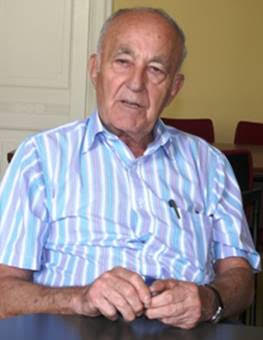
THE VOICE OF INTERNATIONAL LITHUANIA
|
VilNews has its own Google archive! Type a word in the above search box to find any article.
You can also follow us on Facebook. We have two different pages. Click to open and join.
|
Archive for January, 2012
Re: Article by Dr. Irena Veisaite
- Posted by - (6) Comment
Dear Editor,
The recent article by Dr. Irena Veisaite agreeing with the antisemitic
establishment's evaluation of the life's work of Dr. Efraim Zuroff,
Director of the Simon Wiesenthal Center's Israel office and a leading historian of the Lithuanian Holocaust, has been a cause of great dismay
to us, the world's last active organization of Lithuanian Holocaust
survivors and their descendants.
We have been equally dismayed by her years of betrayal of her fellow survivors and willingness to serve a Lithuanian government PR agent
who is sent far and wide to help cover up for the policies of Holocaust distortion and toleration of antisemitism in Lithuania.
We wish Dr. Veisaite well, and at the same time we ask that the readers of VilNews.com remember that she represents her own views and perhaps
those of high Lithuanian government officials, but certainly not those of the international community of Lithuanian Holocaust survivors who will not remain silent.
Joseph A. Melamed
Attorney
Chairman, Association of Lithuanian Jews in Israel
- Bookmark :
- Digg
- del.icio.us
- Stumbleupon
- Redit it
Nida tranquility
- Posted by - (0) Comment

Text and photos: Aage Myhre
aage.myhre@VilNews.com
The quiet resort village Nida is based at the Curonian Spit (Neringa) near the Kaliningrad border, less than one hour’s drive from Klaipeda at Lithuania’s seacoast. With beautiful Baltic Sea beaches on the west side, the large Curonian Lagoon on the east side and the largest sand dunes of Northern Europe on the southern side, this is a truly unique place for a relaxed vacation. You should spend one or two weeks in a self catering fisherman's cottage or a few days in a guest house or hotel. Nida is the place to take it easy!
Here is what a visiting family wrote after their visit:
"We have never visited anywhere that had such a relaxing effect on us as the view from the sun clock on the Great Dune in Nida. The silky-smooth lagoon to one side of the golden spit and the sparkling waves of the Baltic Sea to the other side was breath-takingly beautiful. We did lots of walking, running and cycling including a walk along the Baltic Sea beach from west of Preila back to Nida”.
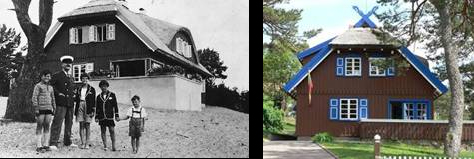
The Nida home of the German writer Thomas Mann,
today the Thomas Mann Museum.
- Bookmark :
- Digg
- del.icio.us
- Stumbleupon
- Redit it
Nida tranquility
- Posted by - (1) Comment

Text and photos: Aage Myhre
aage.myhre@VilNews.com
The quiet resort village Nida is based at the Curonian Spit (Neringa) near the Kaliningrad border, less than one hour’s drive from Klaipeda at Lithuania’s seacoast. With beautiful Baltic Sea beaches on the west side, the large Curonian Lagoon on the east side and the largest sand dunes of Northern Europe on the southern side, this is a truly unique place for a relaxed vacation. You should spend one or two weeks in a self catering fisherman's cottage or a few days in a guest house or hotel. Nida is the place to take it easy!
Here is what a visiting family wrote after their visit:
"We have never visited anywhere that had such a relaxing effect on us as the view from the sun clock on the Great Dune in Nida. The silky-smooth lagoon to one side of the golden spit and the sparkling waves of the Baltic Sea to the other side was breath-takingly beautiful. We did lots of walking, running and cycling including a walk along the Baltic Sea beach from west of Preila back to Nida”.
|
|
|
The Nida home of the German writer Thomas Mann, today the Thomas Mann Museum.
The Curonian Lagoon
|
The Curonian Lagoon is separated from the Baltic Sea by the Curonian Spit. Its surface area is 1,619 square kilometres. The Nemunas River supplies about 90% of its inflows; its watershed consists of 100,450 square kilometres in Lithuania, Belarus, and the Kaliningrad Oblast. At the northern end of the Spit, there is a passage to the Baltic Sea, and the place was chosen by the Teutonic Knights in 1252 to found Memelburg castle and the city of Memel (today’s Klaipeda). The Lagoon, formed about 7,000 years BC, is classified as brackish. Water depths average is 3.8 meters. Nida is very beautifully situated on the west bank of the lagoon. It is from here the fishermen go out on the lagoon in the early morning hours to find the catch of the day. This is where sailing boats gather in late summer evenings. It is in the small streets and on the promenade along the lagoon that the good life in Nida takes place. |
|
|



I
took this picture on a warm late summer evening. I had had a very
enjoyable evening with family and friends, and decided afterwards to go for a
walk along the Curonian Lagoon. The silence, peace, and the slow whisper of the
waves from this large lagoon makes an unforgettable impression. The faint
moonlight and the last sailing boats that were heading towards the Nida harbour
made the impression no less impressive. Nida is a place on earth that
simply MUST be experienced...

The local fishermen are still going strong!





Colourful fishermen homes










A sailors’ paradise





A children’s paradise




The Nida sand dunes are high as mountains
|
Nida is located in the middle of the Curonian Spit (Neringa), half way between Klaipeda and Kalininigrad. The Curonian Spit is a long and narrow sand peninsula that separates the Curonian Lagoon from the Baltic Sea. The huge sand dunes here are the largest in North Europe. A walk on the sand-hills on the outskirts of Nida is an absolute must when you're here. You climb up the steep stairs, take off your shoes. Kilometers of hot desert sand lies ahead. To the east you overview the huge lagoon between the Curonian Spit and the Lithuanian mainland. To the west you can see out over the glassy Baltic Sea almost to Sweden. Fantastic!
|
|



The fantastic Nida beaches – at the Baltic Sea
The Curonian Spit is around 3 km wide here at Nida, and it’s very easy to walk from east to west, over the hilltop, through beautiful pine forests, to some of the finest beaches existing at the Baltic Sea. Probably the best in Northern Europe!
|
|
|

Nida tranquillity awaits you!

- Bookmark :
- Digg
- del.icio.us
- Stumbleupon
- Redit it
![]()
The year 2011 was the least successful for Vilnius bourse NASDAQ OMX; its index fell 27.5% – the lowest since 2008, The Lithuania Tribune reports, referring to 15min.lt.

A specialist of SEB Bank noted that the decrease of the Vilnius stock exchange index took place due to the foreign facts, writes LETA/ELTA.
"At least one can take comfort from the fact that decline [of the stock exchange in 2011] was mainly due to foreign news, not local. From the earthquake in Japan to the eurozone debt crisis", said Arvydas Jacikevicius, Senior Broker at SEB Bank.
According to him, the main European stock markets still tried to resist the pessimism up until the end of the summer, while stock markets in developing countries, including Lithuania, did not show any obvious signs of recovery since spring.
However, according to Rytis Davidovicius, the General Director of Orion Asset Management, which manages 7.6 million litas worth investment fund Omx Baltic Benchmark, next year would bring many challenges because of multiple market sentiment changes and political decisions directly affecting the stock markets.
"For this reason, the investors should not get distracted and after reassessing their risks keep to their investment strategy", said R. Davidovicius.
From the beginning of this year to Wednesday, Vilnius stock market index OMX Vilnius suffered the biggest fall among the Baltic States' indexes – by 27.5%, the OMX Tallinn fell by 22.9%, and OMX Riga – by 6.2%.
Read more…
- Bookmark :
- Digg
- del.icio.us
- Stumbleupon
- Redit it
![]()
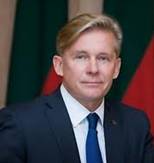
In the wake of failed bilateral talks on Polish minority schools in Lithuania, the Lithuanian foreign minister has said that his country “do not need a big brother.”
Foreign Minister Audronius Azubalis said that Poland had “driven into a dead end” by trying to influence internal Lithuanian affairs.
“Our government said clearly: all issues relating to citizens, regardless of whether they relate to minorities, shall be settled by we ourselves,” he told the Lithuanian IQ magazine.
The foreign minister added that his own country was not to blame for the problems.
“Vilnius is not responsible for tensions in Polish-Lithuanian relations,” he said.
Read more…
- Bookmark :
- Digg
- del.icio.us
- Stumbleupon
- Redit it
- Posted by - (1) Comment
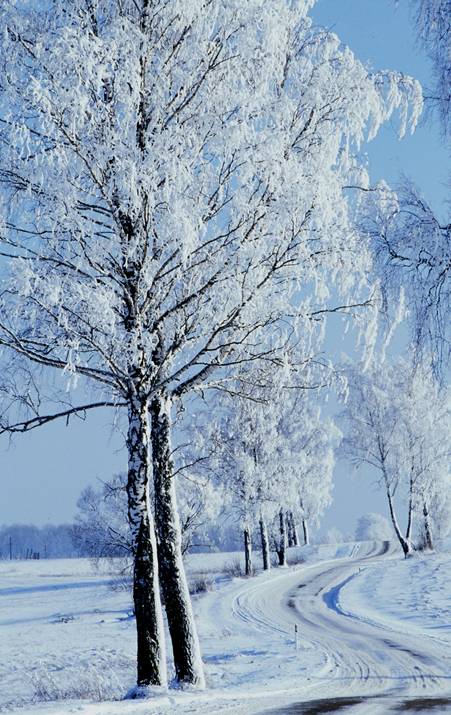
Winter motive from Aukštaitijos National Park.
May 2012 become
just as peaceful as a
Lithuanian landscape…
- Bookmark :
- Digg
- del.icio.us
- Stumbleupon
- Redit it
- Posted by - (2) Comment

Winter motive from Aukštaitijos National Park.
May 2012 become just as peaceful as a Lithuanian landscape
Text: Aage Myhre – aage.myhre@VilNews.com
Photos: The Lithuanian State Department of Tourism - http://www.lithuaniatourism.co.uk
It is New Year's Day year 2012. I wish all of you, dear readers of VilNews, a happy, good, warm and successful year. Let us all do our best to show genuine care and concern for our fellow human beings throughout this year that now barely has started.
Both in Lithuania and in other countries there will also in 2012 be huge groups of people who will feel the consequences of the global economic crisis, and I am afraid war and injustice will continue in many areas of our world throughout the year.
Then there is the the Maya's "Long Count" calendar that marks the end of a 5,126-year era on the 21st of December this year. This has led some to forecast widespread catastrophes for the world. Others predict a restoration of a "true balance between Divine Feminine and Masculine, whereas some anticipate a "change in the nature of consciousness," assisted by indigenous insights and psychedelic drug use...
I recommend the Lithuanian nature as medicine for all who seek peace in their souls in the midst of all problems and predictions for 2012.
Peaceful, harmonious and energizing is the landscape here, as it has been for millions of years. This is a landscape that has seen more war and bloodshed than most other places around the globe. But it is a good landscape. Not as dramatic and wild as in many other countries. Rather quietly and unpretentiously beautiful. The forests, the mighty rivers, and the plains that slowly wave from Belarus to the colossal sand dunes out there on the Baltic Sea coast.
About 28 % of the country is covered by forests, 40 % of them are pines. Wild berries and mushrooms grow in abundance and the picking of them is the most popular hobby of local people. About 300 species of birds can be found, and four Nature Reservations are their breeding grounds. White Storks are the most popular birds, returning to their Lithuanian nests every spring from Sub-Saharan areas where they spend their winters. The White Stork is the country’s national bird, and 25 March is the official ‘Stork’s Day’. Notably, Lithuania is a beneficial and important habitat for the White Storks with the highest known nesting density in the world!
There are over 4,000 lakes and 722 rivers in Lithuania. Wetlands and a mixed forest zone cover nearly 33% of the land. The longest river is the Nemunas, which is 937 km (582 mi) long totally, whereas its length through Lithuania is 457 km (284 mi). Nemunas gathers and carries the waters of many tributaries to the Baltic Sea, wherein lies Lithuania's famous "amber coast" at the Curonian Spit, a 100 km-long (60 mi) bank of sand dunes and pine trees which stretches from the southwest to the seaport of Klaipėda and encloses the vast Curonian Lagoon.
For centuries, amber, Lithuania's precious harvest of the sea, has been washed onto these golden sands. Lithuania enjoys almost 100 kilometres (60 mi) of beautiful sandy coastline, white, soft beaches that are a true bathing paradises during the summer months. Probably the best beaches in all Northern Europe!
The Lithuanian landscape has been smoothed by glaciers. The highest areas are the moraines in the western uplands and eastern highlands, none of which are higher than 300 metres (1,000 ft) above sea level, with the maximum elevation being Aukštojas Hill at 294 metres (964 ft). The best of the country's scenery can be seen in its five National Parks.
The climate lies between maritime and continental, with wet, moderate winters and summers. According to one geographical computation method, Lithuania's capital, Vilnius, lies only a few kilometres south of the geographical centre of Europe.
But these are only the hard facts. The Lithuanian countryside is so much more than just facts. It is only when you begin your walk through the woods here, as you slowly float down one of the rivers in a canoe or a raft, when you sit down at one of the many amazing lakes, or when you first put your foot down into the Baltic Sea’s salty water that you really understand that this country is different. And now, in the year of 2012, you will have the great opportunity of exploring and feeling close to Lithuania's highly inspirational nature. A landscape of peace...
|
|
The colours of the Lithuanian flag symbolise: |
|
Amber (gintaras) is highly treasured and is the only national gem of Lithuania. |

Lake and island formations in Aukštaitijos National Park.

Autumn in the Aukštaitijos National Park.

A winter coated Aukštaitijos National Park.

Mingė, often nicknamed Lithuania’s Venice) is a small fishermen's village in the Šilutė district, on the Minija river, and is part of the Nemunas Delta Regional Park. This village is unique in Lithuania as the main "road" is the river. Houses are situated on both banks and there is no bridge to connect them. The only way to get around is to use a boat. In 1997 it had 48 residents.
The Curonian Spit (Neringa)
The Curonian Spit (Neringa) is a long and narrow sand peninsula that separates the Curonian Lagoon from the Baltic Sea. This natural wonder, listed as a UNESCO World Heritage site, still exists today solely due to human efforts to counter the natural erosion process. The Neringa landscape is truly unique, dominated by picturesque sand dunes and pristine beaches. The area has a distinct ethnographic flavour, characterised by wooden fishermen cottages and the local speciality of smoked fish. Those looking for a quiet seaside vacation in picturesque surroundings will most definitely not be disappointed.
The huge sand dunes of the Curonian Spit are the largest in North Europe. You reach them by ferry from Klaipeda (takes only 10 min).The Curonian Lagoon is separated from the Baltic Sea by the Curonian Spit. Its surface area is 1,619 square kilometres. The Nemunas River supplies about 90% of its inflows; its watershed consists of 100,450 square kilometres in Lithuania, Belarus, and the Kaliningrad Oblast. At the northern end of the Spit, there is a passage to the Baltic Sea, and the place was chosen by the Teutonic Knights in 1252 to found Memelburg castle and the city of Memel (today’s Klaipeda). The Lagoon, formed about 7,000 years BC, is classified as brackish. Water depths average is 3.8 meters.
|
|
|
|
|

Curonian Spit sand dunes.

Curonian Spit sand formations.
|
THE NATIONAL PARKS Source: http://www.lithuaniatourism.co.uk Five national parks (Aukštaitijos, Dzūkijos, Žemaitijos, Kuršių nerijos and Trakų) and 30 regional parks filled with virgin forests and unspoiled marshland exist in Lithuania, inhabited by protected wild animals and rare birds. Three parks (Aukštaitijos, Dzūkijos and Žemaitijos) are named after the ethnographic regions they are situated in. Each of the parks is under the government’s protection and all kinds of recreational and agricultural activities are strictly regulated so that these natural wonders can be enjoyed by everyone. Protected areas, including natural and cultural reserves as well as national and regional parks, cover almost 12% of the country’s entire territory. >Apart from these, there are 386 special natural monuments (old trees, natural springs, standing stones, etc.) and 3,719 cultural monuments (old ethnographic villages, manors, castles, churches, barrows) under the state’s protection. In many parks, particularly in eastern and western Lithuania, old villages that have kept their traditional structures of unsurfaced streets, thatched-roof farmsteads and fields can be found. They have the status of ethnographic reserves. These national and regional parks offer visitors the opportunity to see Lithuanian customs and traditions as well as try out local foods and have a good time. www.countryside.lt There are plenty of opportunities for learning more about Lithuania and its lovely, unspoilt countryside. There are routes and paths for walking, horse riding, cycling, birdwatching and water tourism. Viewpoints throughout the country with magnificent views of the surrounding landscape can easily be reached. Information in English and other languages is available at the parks’ information centres:
|
- Bookmark :
- Digg
- del.icio.us
- Stumbleupon
- Redit it
![]()

“Vilnius became one of the favourite cities due to its Flag Day, since 1919, when the Lithuanian tricolor was first raised on the castle tower.
Argophilia Travel News has named its favorite Eastern European cities to celebrate 2012: Riga, Tallinn, Prague, Debrecen and Vilnius.
Riga was named one of Eastern Europe’s best due to its spectacular fireworks, live concerts and shows; Tallinn was praised for its artistic celebration program, and Vilnius – for its unique Flag Day tradition marked on Jan. 1, informsLETA.
“Riga (Latvia) holds a New Year’s Eve fireworks event next to the Freedom Monument (…) There are many events – live concerts, shows, handicrafts market – before midnight, when the fireworks will light the sky,” writes Argophilia.
“Tallinn (Estonia) concludes 2011 with a unique artistic celebration: the Estonia Ball 2011 at the National Opera. Traditional food and drinks accompany the event, which will feature the National Symphony Orchestra, soloist Marilin Kongo and DJ Aivar Havi from Club Colombinas. Guests will enjoy dancing in the unique atmosphere of the theater. (…)”
“Vilnius (Lithuania) celebrates more than just the New Year on Jan. 1: this is Lithuania’s Flag Day, since 1919, when the Lithuanian tricolor was first raised on the castle tower on Gediminas’ Hill. Aside traditional concerts, and fireworks at midnight, you can see the changing on the flag the next day, and assist at various national celebrations,” noted Argophilia’s experts.
- Bookmark :
- Digg
- del.icio.us
- Stumbleupon
- Redit it
“Their wounds of war run so deep, one can still see the scars of the sickle.”
- Posted by - (5) Comment
White picket fences
Copyright 1991 by Susan M. Lucas (Now Susan Lucas Kazenas)
They came into my land
by the hundreds,
by the thousands.
They led their communist offenses
through my white picket fences
and hung their red iron curtains in my window.
They raped my pride
and murdered my children.
Those who escaped were not raped
but could not come home again.
Those left inside had nowhere to hide.
And I laid still in a cold, dead silence
while hot, burning tears
flooded my land.
It didn't go into the history books
of the many lives that they took.
It was a blood no one knew was shed;
because by the sickle it was led.
My beauty within is not seen without.
Do I have nothing to give the world?
My people are loyal,
but you see, I have no oil.
Nor do I have food on my plate
because the greedy bear sits and guards my gate.
Now I am his property when I was always MY OWN.
I belong to NO ONE
but the people who till my land
with their own bare hands,
And to my God to whom those hands are raised.
I have not forgotten my
White Picket Fences
torn down by your offenses.
I rebel against this prison called Fate.
I am the Baltic States.
(I wrote this in 1990 as Lithuania fought for its independence against the former USSR. This poem was hung on the wall by the TV tower in Vilnius after Bloody Sunday. I hope you enjoy it and welcome your comments.)
- Bookmark :
- Digg
- del.icio.us
- Stumbleupon
- Redit it
VilNews e-magazine is published in Vilnius, Lithuania. Editor-in-Chief: Mr. Aage Myhre. Inquires to the editors: editor@VilNews.com.
Code of Ethics: See Section 2 – about VilNews. VilNews is not responsible for content on external links/web pages.
HOW TO ADVERTISE IN VILNEWS.
All content is copyrighted © 2011. UAB ‘VilNews’.

 Click on the buttons to open and read each of VilNews' 18 sub-sections
Click on the buttons to open and read each of VilNews' 18 sub-sections 

























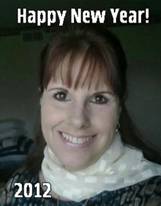
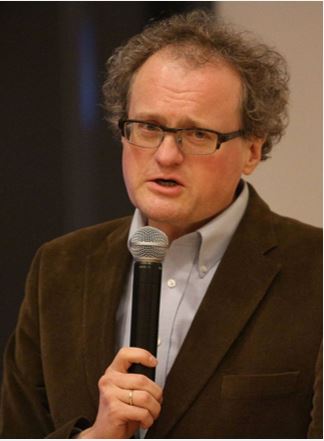

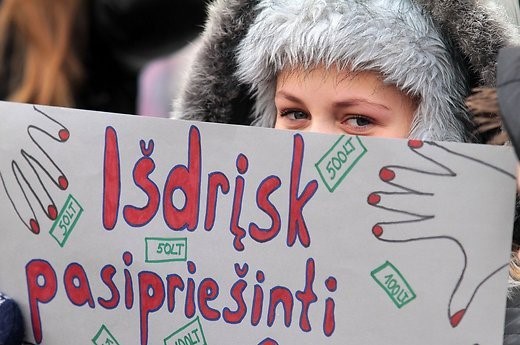


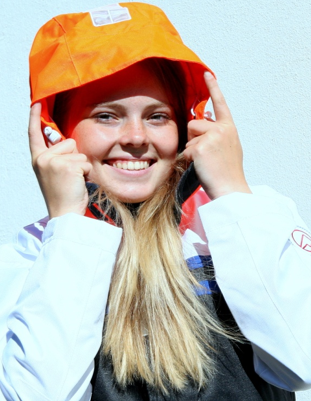
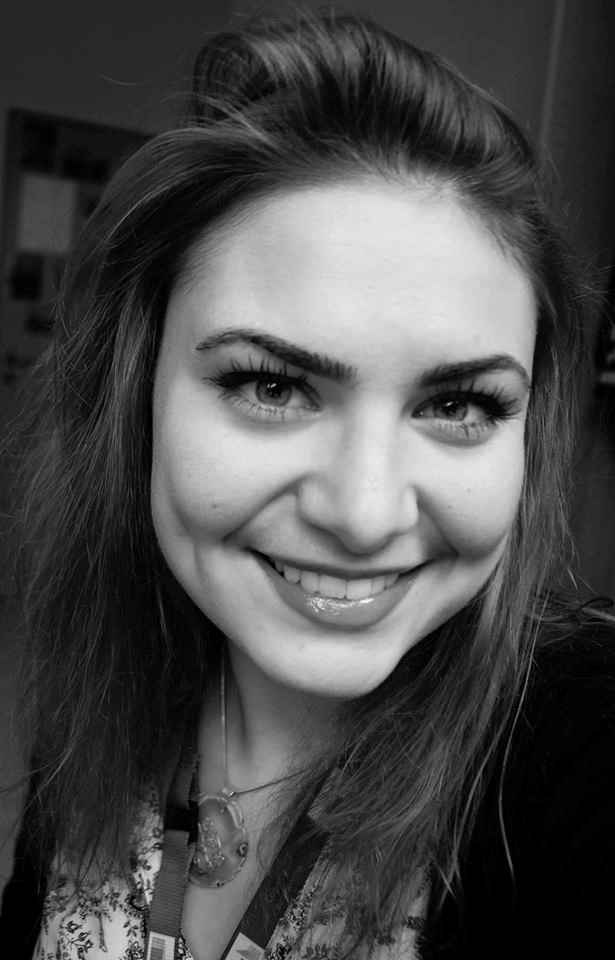

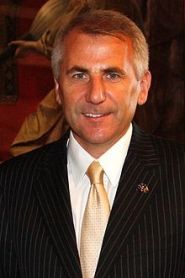
.jpg)
